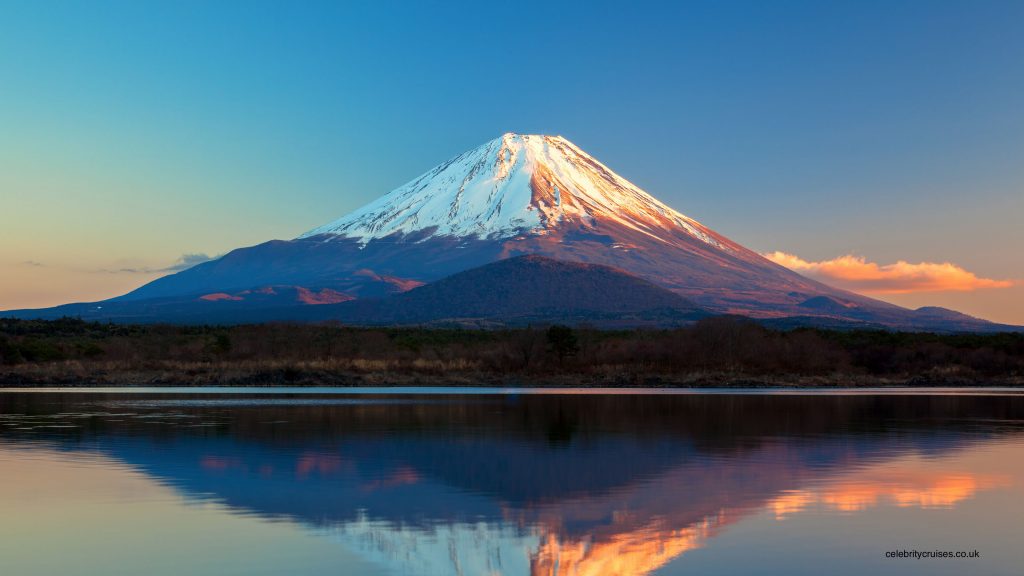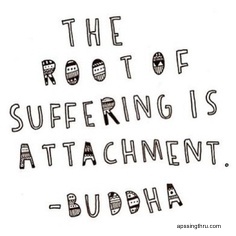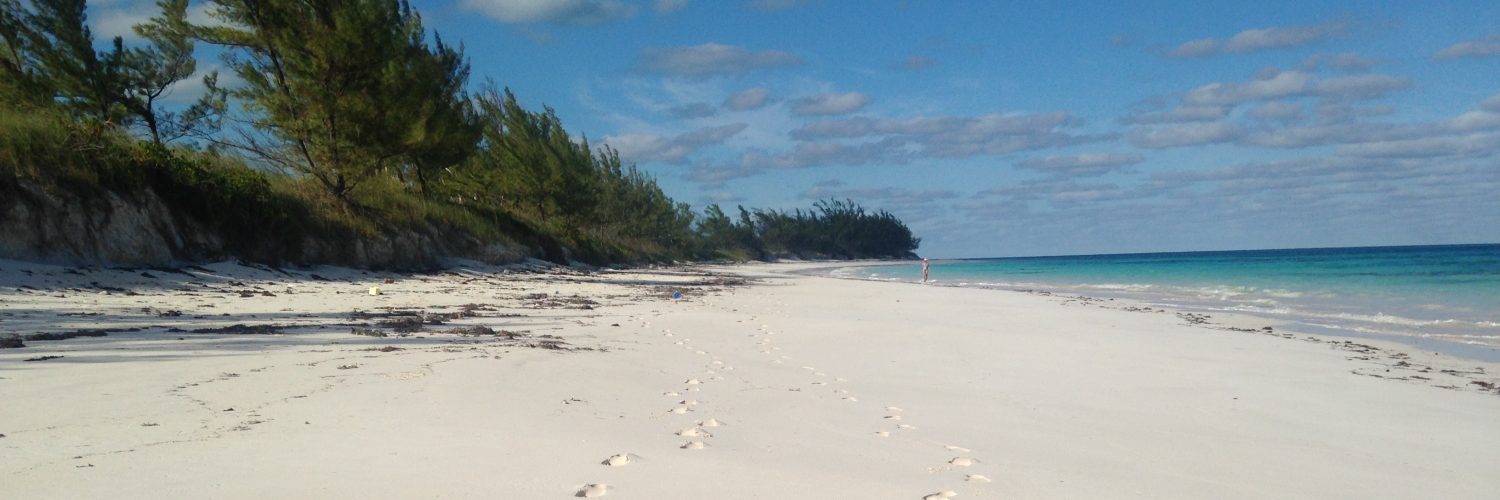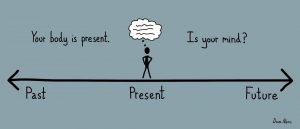New year’s resolutions don’t tend to last too long, even with the best of intentions. This year try taking a mindfulness course that can give you the skills to make a change that can last for life.
Learning how to practice mindfulness can have many benefits:
- calm the busyness of the mind and find peace within
- reduce anxiety and stress
- improve relationships with others
- develop patience and compassion for others

8 session Mindfulness Practitioner Courses are now available with The Well Nest. Courses start on 23rd January at Colwich & Little Haywood Village Hall.
For full course details, see the mindfulness tab or book online via the events tab.
Mindfulness in sports
Mindfulness is the practice of applying awareness to the present moment through sense-based experience rather than thought. In other words, the ability to bring attention to what is happening right now, without imposing judgments on the quality or meaning of the experience. In practicing mindfulness, sportspeople are able to notice thoughts as passing mental events that don’t require action. The ability to observe in this way can lessen the reflex response to a situation and increase the ability to respond in a calmer more objective way.
We often remember the sporting outbursts (John McEnroe, Zinedine Zidane to name but a few) where players are overcome with rage, feelings of injustice or unfair treatment, or respond negatively to crowd interference. With athletes not only needing to consistently turn in their best performance, but also being role models for fans and aspiring young people, changing the way individuals react to thoughts is a growing area of focus in sports.
A Chosen Response
It is not just the one-off outbursts that sportspeople have to contend with; performance anxiety is a large factor whether you are a team player or individual athlete. So how can mindfulness help? Mindfulness can help individuals become aware of their thoughts, bodily sensations and environment. Through noticing as an observer what is happening in the present moment, we can choose to respond in a certain way instead of relying on the reflex, learned response that often isn’t the most helpful.

We can choose to notice the environmental conditions and make adjustments to our play. We can notice how certain scenarios cause tension in the body and we can choose to relax those parts of the body. Or, we can just notice as an observer and watch the feelings or thoughts arise and pass away – they are mental events that don’t necessarily need a reaction; especially where the thoughts are unhelpful or negative or likely to elicit a negative response. Sport can be a very stressful environment. Mindfulness can help individuals to let go of emotional responses and instead help them to act with more balance and wisdom; this could be the difference between winning and losing.
Improving Focus
Often in competitive sports (professional and amateur) it’s easy to ruminate on past mistakes or predict an outcome before the performance has even started. Mindfulness brings us back to the present moment – what is happening right now? By focusing only on what is happening in the moment, thoughts of predicted failure or learned reactions to past events start to lose their power. Our minds and bodies find a freedom to perform in the moment.

As an amateur competitive cyclist, I have felt and witnessed performance anxiety and the effects it can have on the enjoyment and outcome for individuals. It’s easy to slip into the mental cycle of berating yourself for not doing well, or having moments of self-doubt. Mindfulness might not stop these moments, but it will teach you how to observe them purely as mental events and not based on the reality of the moment. Bringing yourself back to the present and anchoring attention on your breath is a powerful practice to overcome attachment to negative thought patterns. Trying a simple breathing practice before an event can reset the mind and body to be able to focus productively on the current situation.
Positive Imagery
Mindfulness is a powerful method for creating space in the mind which can then be used to meditate on positive visualisations. Utilising the senses can affirm visualisations bringing them to life with vividness that can overcome anxiety and negative thought patterns. Creating a positive mental image of a shot, play, race or outcome can help increase confidence and focus making mindfulness an essential practice not only for success, but also for enjoyment.

Practicing mindfulness is mental training that helps refocus awareness so that attention can be redirected purposefully to help you perform to the best of your ability. As with all training, it is a process that requires commitment and repetition. Mindfulness begins with a sitting practice and deliberate times set aside for mindful enquiry. This then moves on to mindful movement and can become a whole of life practice that can be utilised on the court/pitch/field/track before, during and after performances.
The Well Nest could help your sports team to improve performance through the practice of Mindfulness. To learn more about mindfulness, tailor a mindfulness package for your club or team or to register for mindfulness courses in Staffordshire (suitable for everyone, not only athletes) take a look at the Mindfulness pages or contact [email protected]
Letting go of the past
Letting go of the past will be an issue for most people at some point in their lives. We can all remember hurtful things that were said to us decades ago, or bad experiences that we (knowingly or unconsciously) allow to affect our future experiences. I think we would all agree that being able to let go of the past would provide us with more space in our minds and more peace in our lives.
So how do we do it? It comes back to basic mindfulness principles of being in the present moment, using an anchor to keep us there and staying intentionally and without judgment.
Something that should help us gain some perspective on letting go is that the past has already been and gone; it has been let go of already. What our mind is holding onto is attachment to an event, thought, experience or occurrence from the past. It’s that attachment that stays with us and effects our mind over and over again. When we go into the ruminative state, we run the past (or an imagined future) over and over in our minds. Neither the past nor the future exist; it’s just our thoughts that disturb the mind.

If we repeatedly bring ourselves back to the present moment, our mind will start to learn not to dwell in the past and slowly we will let go of attachment or harmful/negative thought patterns that seem to have power over us. One of the best anchors that we can use in our practice of letting go is the breath. It’s always with us and accessible at any time. Bringing awareness to the breath frees the mind from the past and brings it immediately into the present moment. A simple breathing meditation can be used any time, any place and can provide immediate relief from unhelpful thoughts based on the past. By being in the present moment, we are forced to let go immediately of our attachment to the past. The process won’t be easy and it will take time to be free from attachment to the past for longer than a few moments, but practising bringing ourselves back to the present moment will train the mind to let go.
If the breath doesn’t work for you, or your thoughts prove a stronger anchor than observing the breath, you can try a sense based mindfulness practice; using what you hear, see, smell, feel etc in the environment at that moment to keep you in the present.
Using mindfulness to break down attachment stems from Buddhist teachings and practices that have worked for providing mental calm and clarity for many hundreds of years. The Buddhist tradition that I follow very much focuses on making Buddhist teachings practical and accessible for the modern world. Applying traditional mindfulness techniques in practical ways means the application of this ancient knowledge is relevant to helping us solve our modern problems.
Try something old; to find something new.
A Mindful Holiday
 We all love to ‘get away from it all’, ‘leave our troubles behind’ and enjoy a holiday (maybe several if we’re lucky) each year. We have a plan of where to go, what to see, what to do and even the places to eat, the number of hours we want to spend on a beach, the sights we want to tick off our ‘to do’ list. For how much of our holidays are we actually present? Really present…paying full attention to what we’re doing in the moment, not thinking about the next thing we’re going to do or how what we did this morning perhaps wasn’t as great as we thought it would be.
We all love to ‘get away from it all’, ‘leave our troubles behind’ and enjoy a holiday (maybe several if we’re lucky) each year. We have a plan of where to go, what to see, what to do and even the places to eat, the number of hours we want to spend on a beach, the sights we want to tick off our ‘to do’ list. For how much of our holidays are we actually present? Really present…paying full attention to what we’re doing in the moment, not thinking about the next thing we’re going to do or how what we did this morning perhaps wasn’t as great as we thought it would be.
We all hope that a trip away will be the ideal escape from work, from stress, from real life. As soon as we recognise that physically moving out of the sphere of our troubles or busyness doesn’t actually rid us of those things, then we can get the most out of our breaks and life generally.
Happiness and peace of mind can occur anywhere at any time, as long as we are in the present moment, paying attention, on purpose.
Paying attention
We can get the most out of our holidays by simply paying full attention to what we’re doing. I enjoy driving in continental Europe, and I think it’s because I pay so much more attention to the task of driving than I normally do. I’m constantly watching, listening, feeling the roads. My focus is fully on the task…and it becomes enjoyable. My mind is not on the destination and what I’m going to do when I get there…it’s just on the very moment of driving.
Pleasure and peacefulness can be found in many places that might usually frustrate us when we’re on holiday. Being stuck in traffic might seem like a waste of time leading to frustration or irritation, but it’s also a great opportunity to people watch, to observe the real life of another country or culture, to take in the sights and sounds of the places we pass through.
How to holiday mindfully
So, you’ve paid a lot of your hard earned money for a break – how do you get the most out of it by using mindfulness? There are a number of top tips for this…
- Walk as often as possible. This could be to get from A to B or to explore an area or just to get to the shops or beach. Leave the car behind. Being on foot gives you endless opportunity to practice mindfulness. Feel the ground under your feet, listen to everything you can hear in the moment; the language, the breeze, music, traffic, life going on right now. Focus on taking in life as it happens in the moment. When you are outdoors under your own steam, there is so much going on to focus your attention on now. If you aren’t able to walk, spend some time sitting outside and let your senses fully take in the environment.
- Use your senses. Don’t just look at things, take a picture and move on. We are very visual by nature and that’s fine, but we have 4 other senses to work with. Listen to what’s going on, what does the city/forest/beach/mountain where you are sound like? Think back to your last holiday – if someone asked you to describe what your destination sounded like, would you be able to do it? Similarly with smells, we only notice the extremes of good or bad. Try to focus in on the smells of the sea air, the leaves and vegetation, the traffic, any animals nearby, food cooking etc. All these things bring you into the present moment so you create stronger memories and find more peace, more genuine ‘escape’ from busyness. The same approach works with taste and touch; use all your senses to bring yourself into the present.
- Use photography differently. In the age of social media, we carefully construct or contrive images to draw the most appreciation from strangers. Try taking photographs of real moments, real life. Take photos that draw your attention to what your senses (other than sight) are experiencing. Create memories of touch sensation, smell, sound etc. In the present moment, it will draw you right into focussing on now, but later, your images will also serve as mindfulness cues that you can rely on in everyday life.
Remember, the core of mindfulness is to be present, whether that’s on holiday or at home. We often feel obliged to pack in as much as possible when we’re on holiday as it only happens a few times a year. Try to move from ‘doing’ to ‘being’. Don’t just pass through life, really live it.
Mountain Meditation
Mountains are often admired from afar for the qualities that they appear to have. Some of these qualities we find beneficial and seek in life: stability, longevity, calm, unwavering and balanced. When we spend some time really contemplating the image of a mountain, we see that it is constant and reliable through the seasons; it is a home for plants and animals; it provides shelter and protection; it abides in tranquility through the centuries.
While it’s often the case that we try not to actively ‘think’ in passive meditation, we can use the visualisation of a mountain in active meditation to assist us in contemplating and finding inner peace. If we spend time on the visualisation we can imagine ourselves taking on the qualities of the mountain.
The Mountain Meditation can be used as a regular practice or as an escape from the rigours of daily life as and when required. I use the Mountain Meditation often as a precursor to sitting with mindfulness of breathing; it acts as a relaxation technique and brings focus before working on expanding awareness.

How to do it…
- Sitting in a comfortable position on a cushion or chair, have the back straight but not tense and the hands resting in the lap.
- Bring the gaze down towards the floor and gently close the eyes.
- Spend a few minutes on breathing meditation/mindfulness of breathing
- Picture in your imagination a mountain – it could be a snowy mountain of the Alps or Himalayas, it could be a forested mountain bathed in sunshine
- Try to bring your image of a mountain into clear focus
- Observe its shape, lofty peak, solid based, gentle or sharply sloping sides, its surface (rocky, smooth, dusty, forested, snowy etc)
- Notice it’s enormous size and how solid and unmoving it is from afar and up close
- Try to bring the qualities of the mountain into your own body – your head becomes the lofty peak, sitting in your chair you are rooted at the base. Your arms become the slopes of the mountain. Feel the sense of uplift from the base of your body projecting through the crown of your head.
- The mountain experiences the force of the seasons – sun, rain, snow, gales. Through it all, it sits unchanging, experiencing all that comes its way
- The mountain never resists, complains or judges – it accepts everything, just being itself
- We can imagine embodying the same unwavering stillness and calmness.
- We can experience the fullness of life and its changes through the seconds, hours, years
- We will experience the changing nature of our minds, our body, the outside world. We will have periods of shade and of light. We can maintain the peace of the mountain throughout.
- Sit in stillness for a while.
- Gently open your eyes and mindfully arise from meditation after around 20 minutes.
Mindfulness Courses Now Available
Mindfulness is a practice of widening our awareness and insight so that we can live in the present moment without judgment. The ability to watch our minds and the busyness within as an observer rather than through grasping onto thoughts, allows us to experience a greater freedom and peace of mind. The skills of mindfulness can be used in daily life to reduce stress and anxiety, be more productive and develop better relationships at work and at home and lead to a greater sense of physical and mental wellbeing.
The following mindfulness courses are now available in Stafford:
Introduction to Mindfulness—single session course (£25)
Available on the following dates from 6 pm—8 pm:
Tuesday 6th February
Tuesday 13th February
Eight Session Mindfulness Practitioner Course (Introductory offer price £130)
Course starts on Tuesday 27th February and runs weekly with one home practice week at week 5. Each session runs from 6 pm—7.30 pm.
Courses are held in a town centre location with nearby parking. Course materials will be provided.
For more information, visit the Mindfulness tab
The Benefits of Yoga
We’ve all heard that yoga is good for body and mind but isn’t it all just a bit of gentle bending and stretching? What’s all the fuss about…?
The combination of breathing, relaxation, meditation, strength, balance and dynamic movement often found in yoga classes can bring a complete overhaul to our often chaotic lives and busy minds.
Some of the benefits of yoga are more obvious; it builds muscle strength, improves flexibility and stamina, it improves posture, strengthens bones and protects cartilage, it increases heart rate and blood flow and helps drain the lymphatic system. These benefits come from the physical practice, Asana.
It can also help focus and concentration by being mindful of the body and the present moment. The deep and complete relaxation that can come from a yoga practice can fully relax the nervous system. We often spend most of our time in ‘fight or flight’ mode where the sympathetic nervous system is stimulated. This can trigger long-term stress responses and ill health. Yoga is calming and restorative and stimulates the parasympathetic nervous system, lowering breathing and heart rate and bringing the body back to balance.
Yoga is also very useful in providing relief from chronic conditions. A regular practice utilising the full range of body movement improves mobility, flexibility and self esteem. It also improves mood and motivation; you will be more inclined to be active as progress physically, brings progress mentally.
Join a class with The WellNest to see how yoga can improve your body and mind.
Simple breathing meditation
Breathing meditation is the best starting point when you’re new to meditation and also a good place to return to frequently if you’re a more experienced practitioner.
By focusing the attention on the breath, the mind has a single-pointed focus so that distraction is minimized. Once the mind is calmed in this way, we can achieve space and peace in the mind bringing a greater awareness of our selves and our surroundings.
It’s easy to try anywhere and can help reduce stress, tension and anxiety almost immediately.
To try a simple breathing meditation…
Sit in a comfortable position on a cushion on the floor or on a chair. Keeping the back straight but not tense. Allow the eyes to close naturally, allowing a small amount of light in to help stay alert. Place the hands in the lap with the palms facing upward; one hand resting on top of the other.
Start to feel the sensation of the breath entering the nostrils. Cool air enters as we inhale and warm air leaves as we exhale. Focus your attention on the sensations of breathing. In your mind, follow the flow of air to the lungs and back out. Don’t try to adjust the breathing or count the length of the breath; just let it flow naturally.
Thoughts will enter your mind and draw your attention away. When you notice this happening, gently bring the attention back to the breath. Try sitting for 5 minutes a day with breathing meditation and notice how your mind feels.


